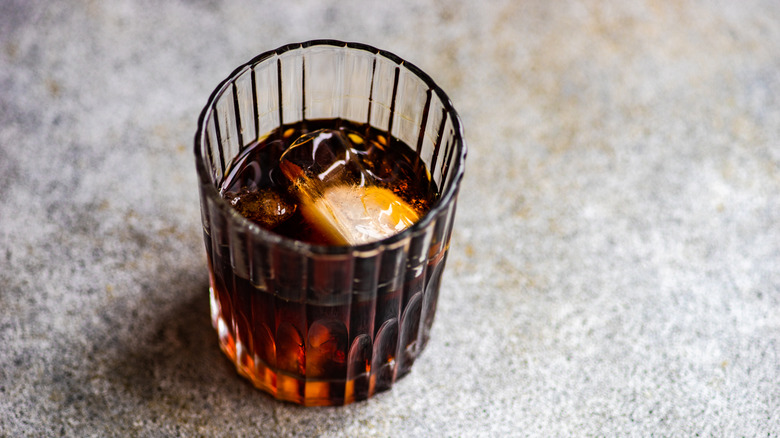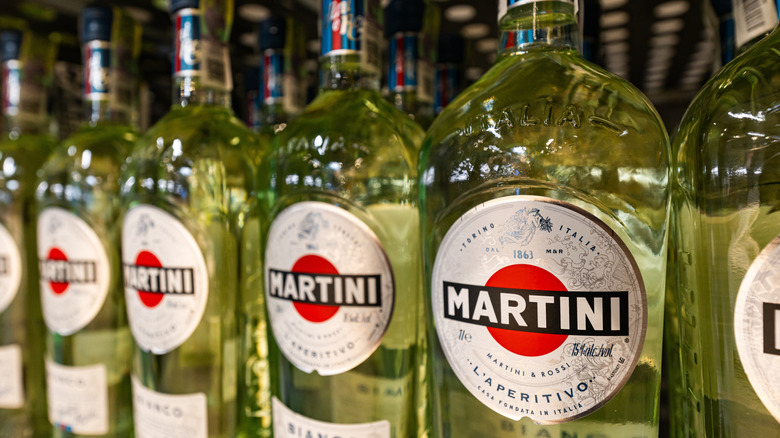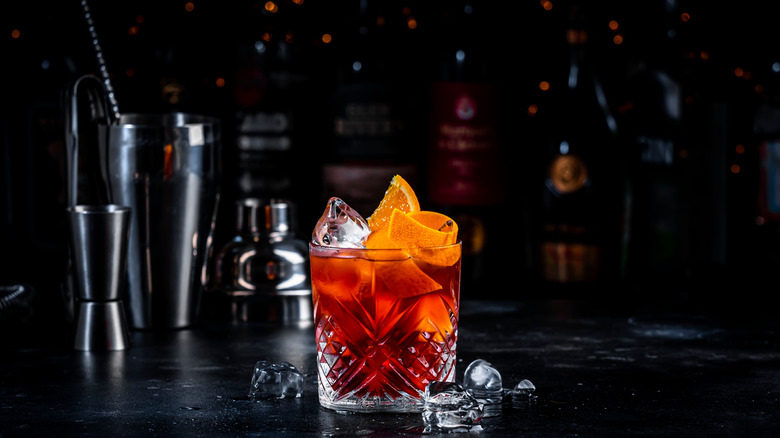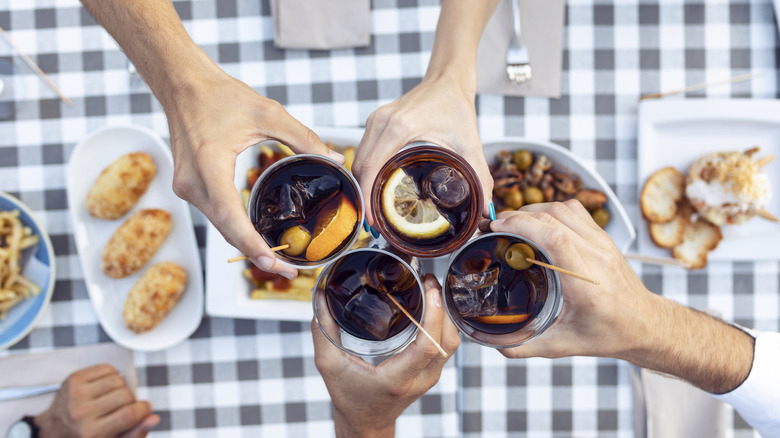What Is Vermouth?
In American bars, vermouth tends to be an afterthought — when ordering a Martini or Negroni cocktail, you may not even realize that vermouth is a key ingredient. Outside of the United States, in countries such as Spain, Italy, and France, it is a celebrated liquor commonly drank on its own before a meal. What exactly is it? Vermouth, or vermut, is a fortified wine liquor. It starts with a base of wine, typically a white, and then is "fortified" with a neutral grain spirit (which increases the ABV) and a variety of botanical ingredients.
Due to the herbs and roots present, vermouth is considered to be an apéritif, which is best drank before a meal. Most vermouth producers keep their ingredient list top secret, but it is well-known that one medicinal herb called artemisia, or wormwood, is almost always a part of the recipe, giving the liquor its signature bitterness. Each vermouth differs, but herbs that are commonly incorporated into the liquor include chamomile, ginger, wormwood, cinchona (quinine), and star anise. There are no hard rules for what botanical ingredients can be included, and producers will often incorporate herbs native to their region to showcase the unique terroir.
The same goes for the wine base — although white is the most popular base, there is no rule that it can't be made with other varieties or a mix. For example, in Jerez, Spain, a local sherry wine is often used as the base.
Different types of vermouth
In terms of flavor, vermouth is slightly reminiscent of wine, but the aromatic herbal flavors are more prominent. The type of vermouth can also drastically change the flavor. There are two main categories: dry and sweet, but many vermouths fall somewhere in between. Within these categories, there are also different colors of vermouth, with white and red being the main options, but there is also a more modern rosé version.
Sweet vermouth is almost always red, and the deep garnet color may mislead you to think that it has a base of red wine, but it actually comes from the added herbal ingredients and sometimes caramel coloring. Although it is on the sweeter side, red vermouth still has bitter-tasting notes, along with woody, fruity, and spicy flavors. Rosé vermouth, sometimes made with a base of rosé, tends to fall on the sweeter side, and is often flavored and colored with fruit and flowers like grapefruit and sakura blossoms.
Dry vermouth is always clear, and as the color suggests, it is a lighter beverage to sip on. It is more bitter than red, and has more floral and citrusy tasting notes. Extra dry is close to dry vermouth in terms of flavor, but the sweetness level is fully dialed back, and it is more herbaceous. Bianco vermouth doesn't fit so neatly in sweet or dry; it falls somewhere in between, and ranges from a light yellow to pale amber color with floral, herbal flavors.
How to drink vermouth
For straight sipping, sweet red, dry white, and Bianco are ideal — extra dry is best reserved for cocktails. Rosé vermouth is also good for sipping on solo, but it's not very common to find in bars; this is a specialty bottle you'll have to order online or find in a liquor store to drink at home. Preparing vermouth to drink as an apéritif is simple: serve it over ice with a slice of orange and/or olives. For something extra, add a bit of soda water and a splash of orange bitters.
The list of cocktails that feature some type of vermouth is impressive, so we'll start with the most famous. The classic Martini makes use of an extra dry vermouth to give the vodka or gin base some depth and flavor. Pro tip: A wet Martini means that there is more vermouth, while a dry Martini means there is more vodka or gin. Cocktails that feature dry white wines, clear liquors, or spritz cocktails are typically good candidates for dry white vermouth.
Red vermouth pairs nicely with deeper and darker flavors, like whiskey, Campari, Amaro, smokey mezcal, and chocolate bitters. The gin-forward Negroni and Manhattan are well-known cocktails that depend on the bittersweet liquor.
What is vermouth hour or aperitivo time?
If you're lucky enough to find yourself in Spain, "vermouth hour" is ingrained in the culture, especially in the Northern region of Catalonia and its capital, Barcelona. Vermouth was introduced to the region by Italians in the 19th century, and it has remained an important drink here ever since. Taking place before or after lunch and weekend afternoons, vermouth hour involves sipping on an ice-cold glass (or two) of red vermouth with friends. The drinks are normally complemented with salty tapas, like olives, nuts, crackers, or breadsticks.
In Italy and France, aperitivo time is also popular. While not explicitly referred to as vermouth hour as in Spain, there are a variety of apéritifs that are sipped on after work time, around 6 p.m., in these countries with vermouth being a popular choice. Red vermouth is more popular in Italy, while white is the preference in France.



